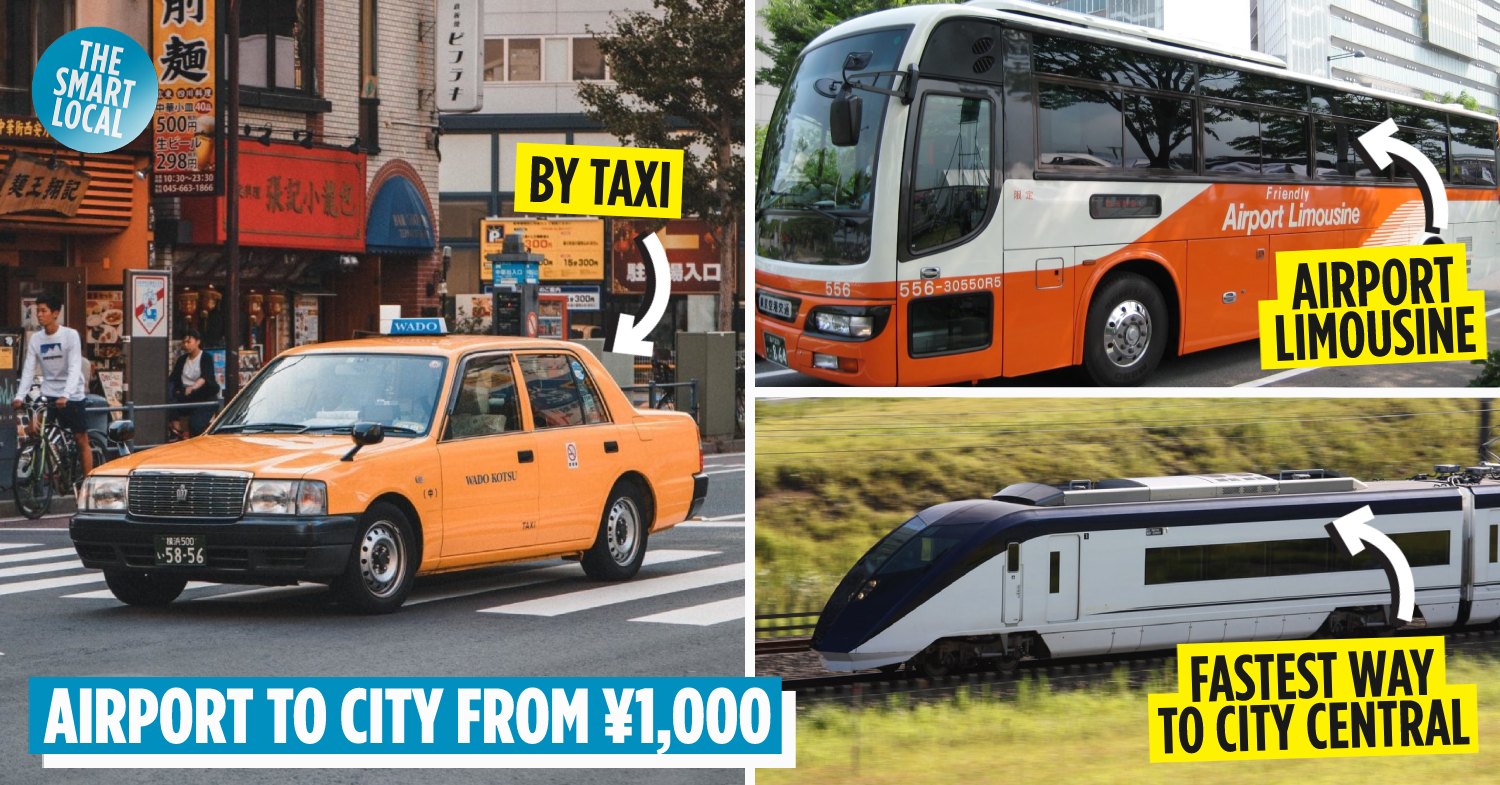Narita Airport to Tokyo with public transport
Alighting from the plane and stepping into Narita Airport, you take a deep breath and savour the chilly air of Tokyo, before embarking on your great escape to the land of futuristic streets and the freshest sushi – or so you thought. Before long, you realise that Narita International Airport – which handles most of Tokyo’s international flights – is situated about 60 kilometres away from Tokyo. Faced with a variety of options to the city, it suddenly seems a little intimidating.
Well, don’t stress yourself out over picking the best mode of transport to the city because we’ve done all the legwork for you. Be it the cheapest, the fastest, or the most comfortable, read this guide to find out how you can get to Tokyo in a way that best suits you.
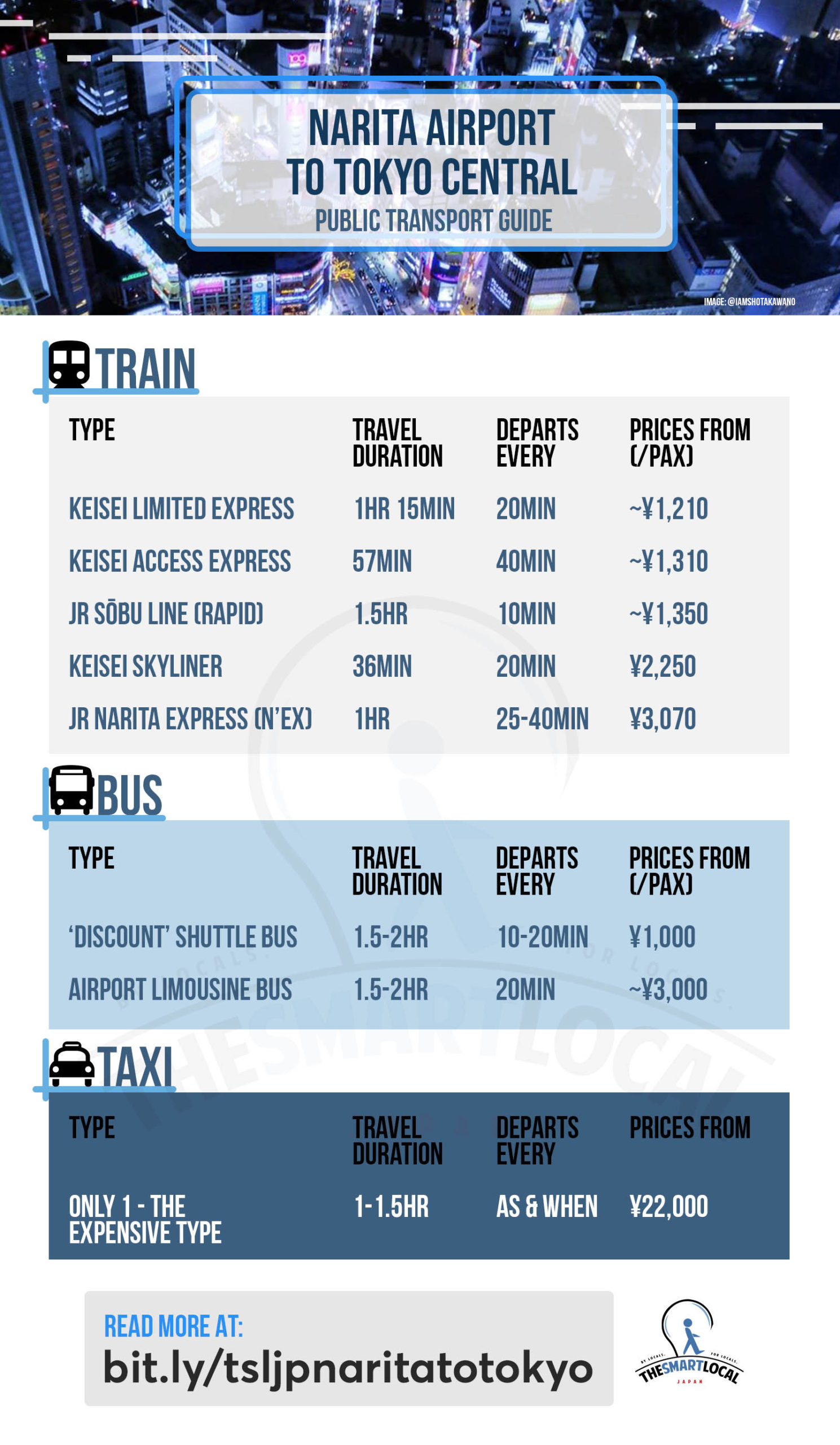
Sorted by public transport type and prices. Note: ¥1,000 is approximately US$9 or S$12.
– By Train –
1. JR Narita Express (N’EX)
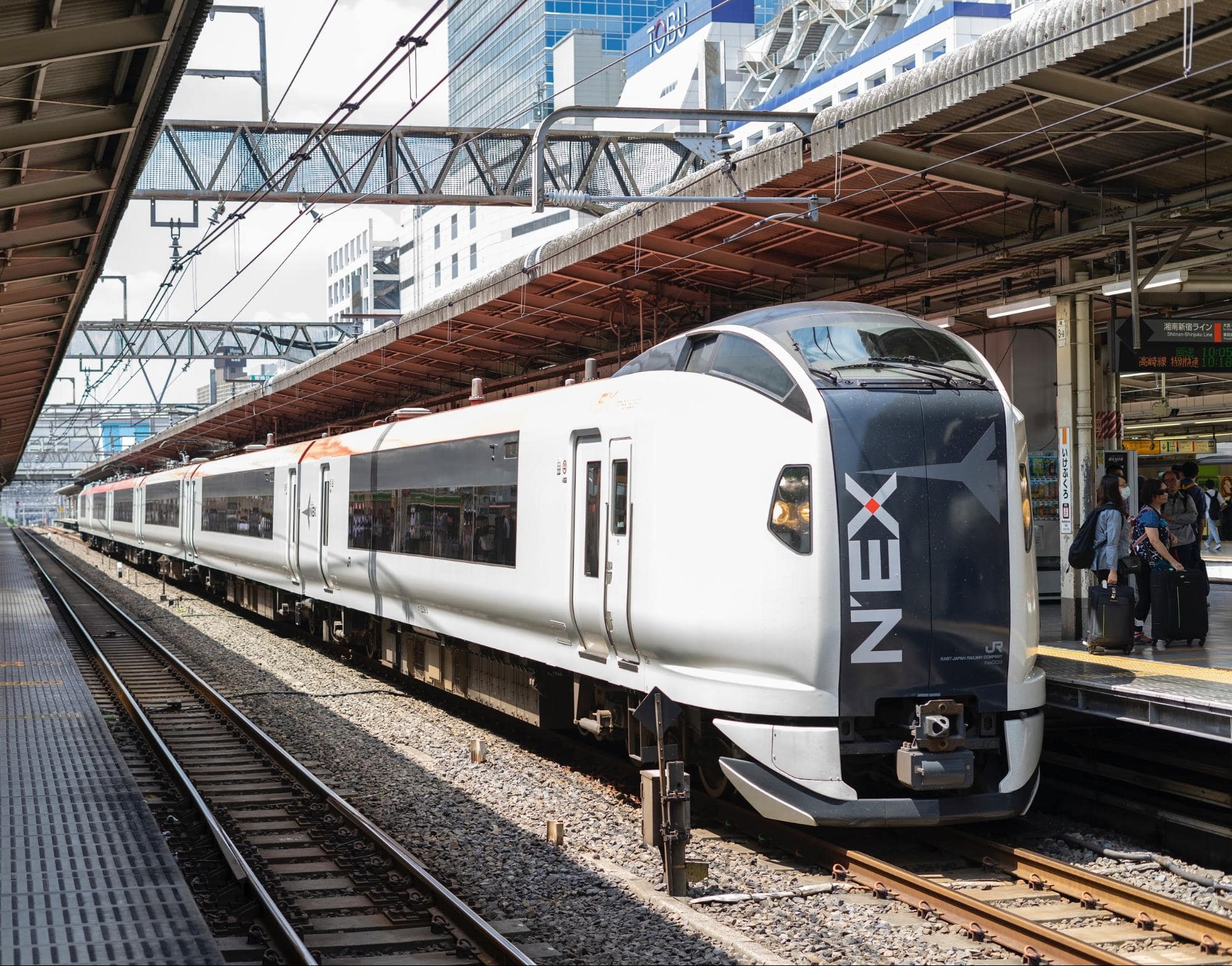
Image credits: Ving N

Image credit: Narita Airport | Narita Express
If comfort and convenience is your concern, then the JR Narita Express (N’EX) is a great option. With pillows and reclining seats, it’s easy to take a quick nap to recharge before taking on the city. Each ticket guarantees you an assigned seat, so you don’t have to jostle with the crowd for a seat and luggage space.
What makes the N’EX standout, however, is that it brings you directly to central Tokyo without any need for transfers. The N’EX serves major urban stations such as Tokyo Station, Shinagawa, Shibuya, Shinjuku and Ikebukuro, so it’s ideal if you’re looking for a direct service towards these stations without any transfers. Do check the schedule to find out which trains stop at those stations here.
While the N’EX is the priciest train option and there aren’t combo discounts available, there are still some ways to save on the tickets. For example, purchase the N’EX Tokyo Round Trip Ticket for a discounted return trip to the airport. The service is also covered by the JR Pass and the three-day JR Tokyo Wide Area Pass if you have already purchased one.
For travellers intending to travel beyond Tokyo, the N’EX goes as far as Kurihama in Kanagawa Prefecture and Omiya in Saitama. It’s great value for money if you’re heading to surrounding cities like Yokohama. Coupled with the JR Pass, you could arrive in further cities such as Kyoto and Osaka in a relatively short amount of time.
Tip: Activating the JR Pass isn’t recommended if you’re going to be in Tokyo for the next few days. The JR Pass allows you to utilise the shinkansen bullet trains, other non-bullet trains, buses and even ferries operated by the JR Group – these rides are often costly if you’re purchasing a single-use ticket. While you can use the JR Pass within Tokyo for its subway lines, it would be wise to only activate it when you’re heading out of Tokyo for an inter-city trip to maximise the JR Pass’ utility and get your money’s worth.
One-way trip to Tokyo Station
Price: ¥3,070/pax for adults, ¥1,530/pax for children
N’EX Tokyo Round Trip
Price: ¥4,070/pax for adults, ¥2,030/pax for children
Estimated travel time: 1 hour, departs every 25-40 minutes
Check their list of departures here.
2. Keisei Skyliner
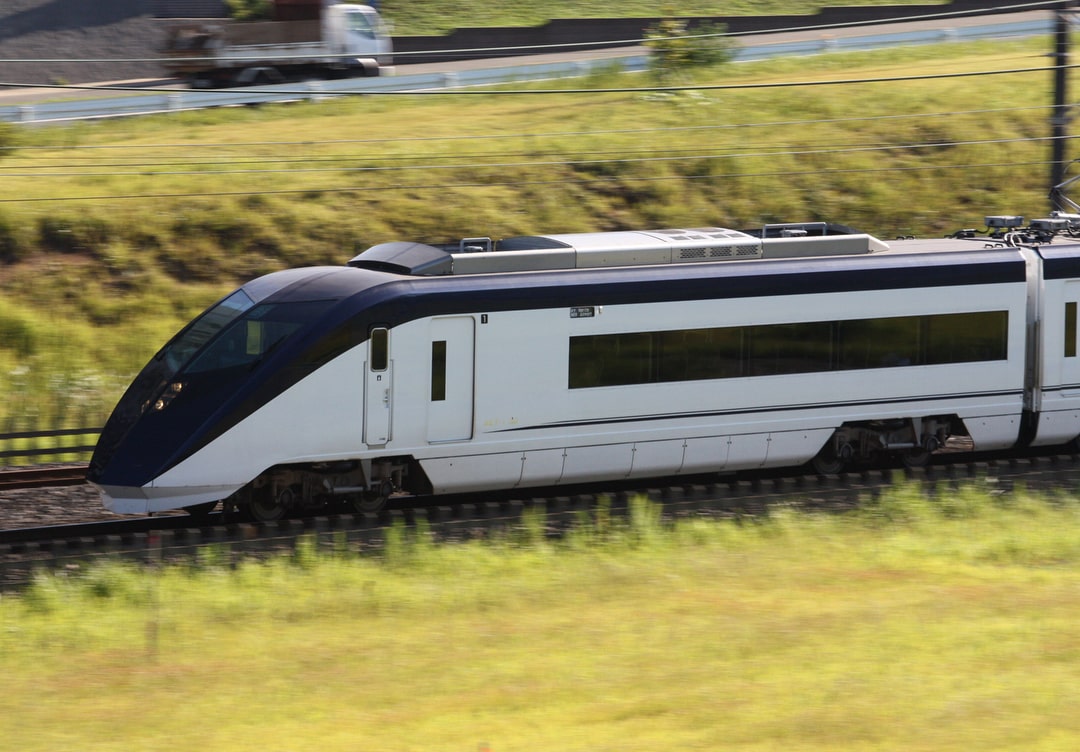
Image credit: @yasushi1031

Image credit: Keisei Electric Railway
Connecting Narita Airport to Nippori Station and Ueno Station, the Keisei Skyliner is the fastest way to reach central and downtown Tokyo. With an impressive travel time of only 36 minutes to Nippori Station and 41 minutes to the well-connected Ueno Station, it’s convenient to transfer to the other stations in the city.
Its sleek interiors and comfort-oriented design provide one of the best passenger experiences anyone can ask for. Ergonomically-designed seats, individual power outlets and free Wi-Fi are just some of the creature comforts one can expect to find onboard the Skyliner.
While rides on the Skyliner are not covered by the JR Pass, tickets are cheaper than the N’EX. Discount packages combining airport transfer and a Tokyo subway day pass or Teito Taxi pickups from Ueno Station are available.
Tip: Book tickets online before arrival to save time and hassle. Tickets purchased in advance are also cheaper. Also, if you have too much baggage with you and you’d like to start sightseeing straightaway, luggage delivery service is available.
One-way trip to Nippori Station and Ueno Station
Price: ¥2,520/pax for adults, ¥1,270/pax for children
Purchasing online for one-way trip to Nippori Station and Ueno Station
Price: ¥2,250/pax for adults, ¥1,120/pax for children
Purchasing online for round trip
Price: ¥4,380/pax for adults, ¥2,190/pax for children
Estimated travel time: 36 minutes, departs every 20 minutes
Check their list of departures here.
3. Keisei Access Express
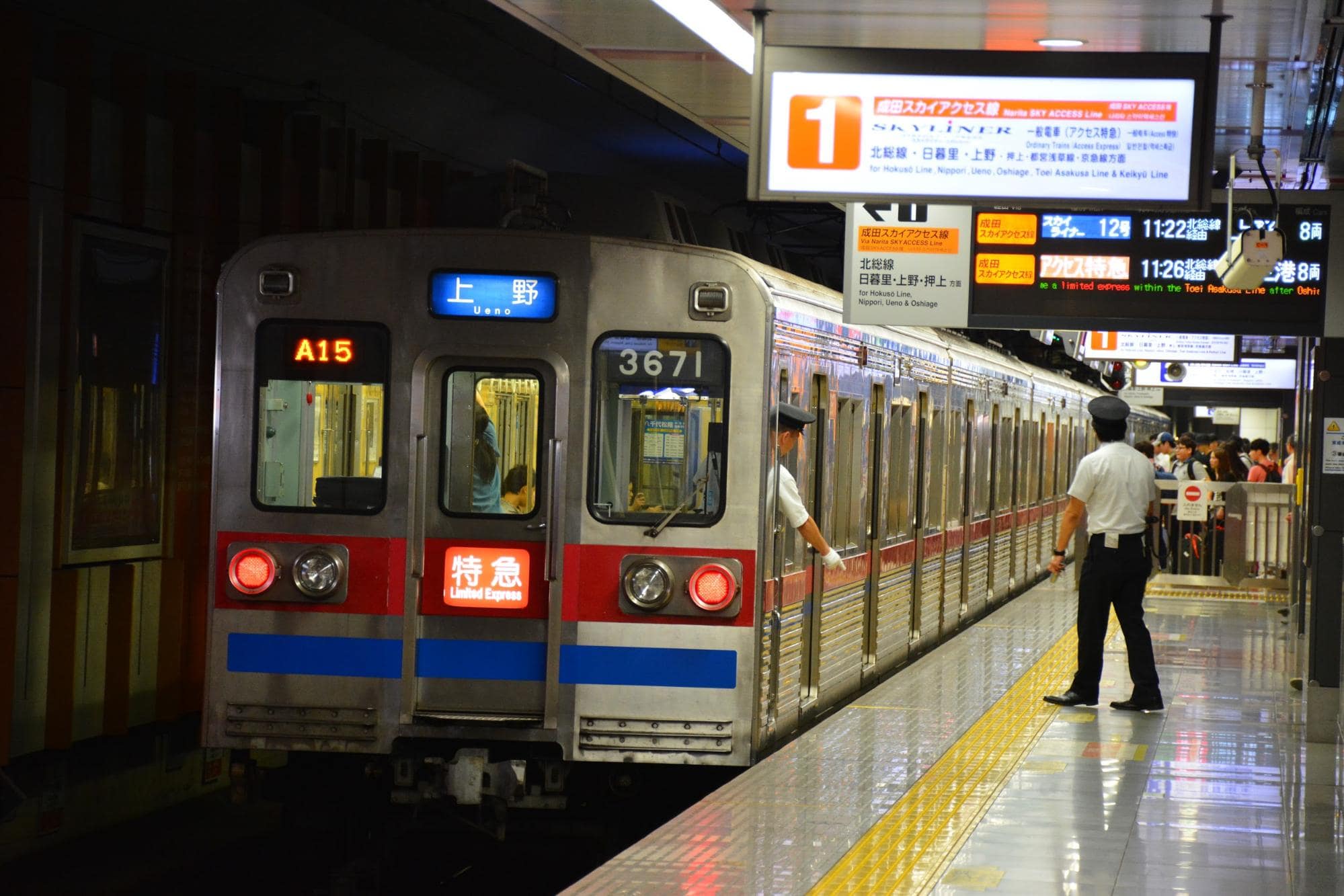
Image credit: Cheng-en Cheng

Image credit: Keisei Electric Railway
The Keisei Access Express is a great option for budget travellers who don’t have much luggage and don’t mind squeezing with the regular commuter crowd. If you can’t wait to dive straight into sightseeing around the popular destinations in Tokyo, the Access Express is a fast and direct train service which connects you directly to the Toei Asakusa Line and JR Yamanote Line. That means you could head directly to central Tokyo districts like Asakusa and Higashi-Ginza, making it better connected than the Skyliner.
The Access Express Line is surprisingly quick, with an estimated travel time of less than an hour from the airport to Asakusa Station. While it is ¥200 more expensive than the regular Keisei trains heading to the city, the additional speed and convenience make the additional fee worth it. However, if you’re looking for a comfortable ride with guaranteed seats, the express trains may be better options for you.
One-way trip to Asakusa
Price: ~¥1,310/pax for adults, ~¥650/pax for children
Estimated travel time: 57 minutes
4. JR Sōbu Line (Rapid)
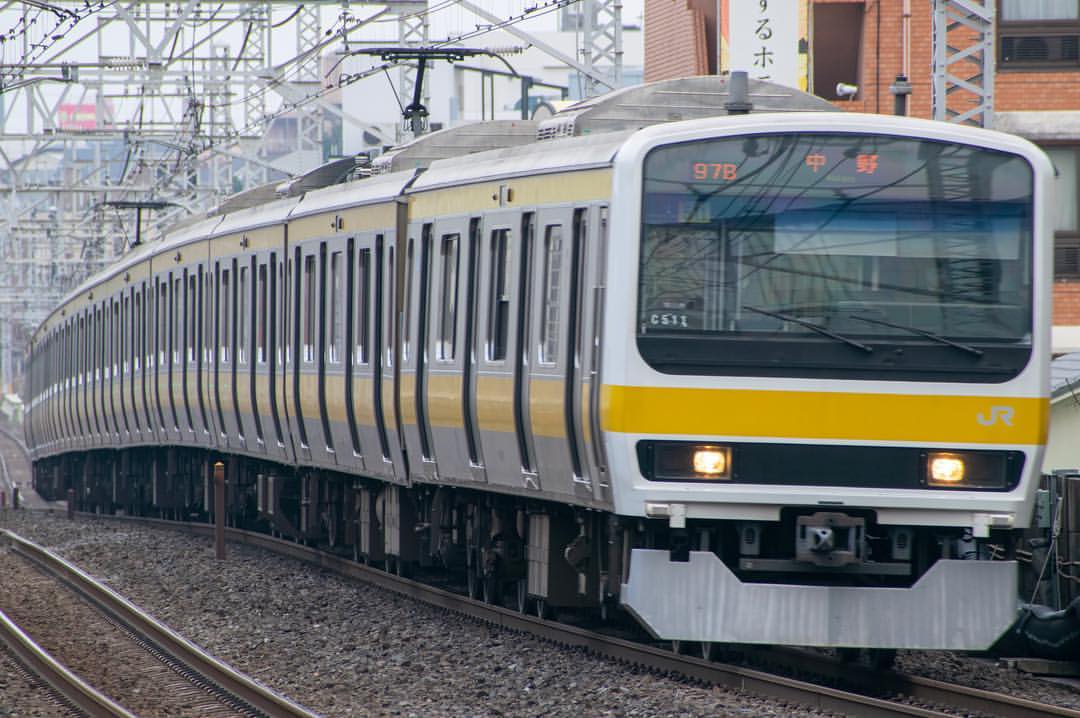
Image credit: @chibachiba_1109
A cheaper alternative to the N’EX on the JR lines, the Sōbu Line Rapid Service connects you to Tokyo on a conventional commuter train.
While inexpensive, the Sōbu Line Rapid Service does take a longer time to get you to Tokyo – about an hour and a half to Tokyo Station, plus you’ll have to transfer to the line at Chiba Station. As it’s a normal commuter train, it does stop at several stations and can get crowded during the morning and evening rush hours. Seats and luggage space may be hard to come by during peak hours.
To get to central Tokyo, take a JR Narita Line train bound for Chiba Station before transferring to the Sōbu Rapid Line.
Tip: Avoid the rush hours, which are typically 7.30AM to 9.30AM and 5.30PM to 7.30PM. If you’re intending to take the Sōbu Line but find yourself caught in the rush hour, go for a meal instead. If all else fails, head to the ends of the cabins for more luggage space.
One-way trip to Tokyo Station
Price: ~¥1,350/pax for adults, ~¥680/pax for children
Estimated travel time: 1.5 hours, departs every 10 minutes
5. Keisei Limited Express
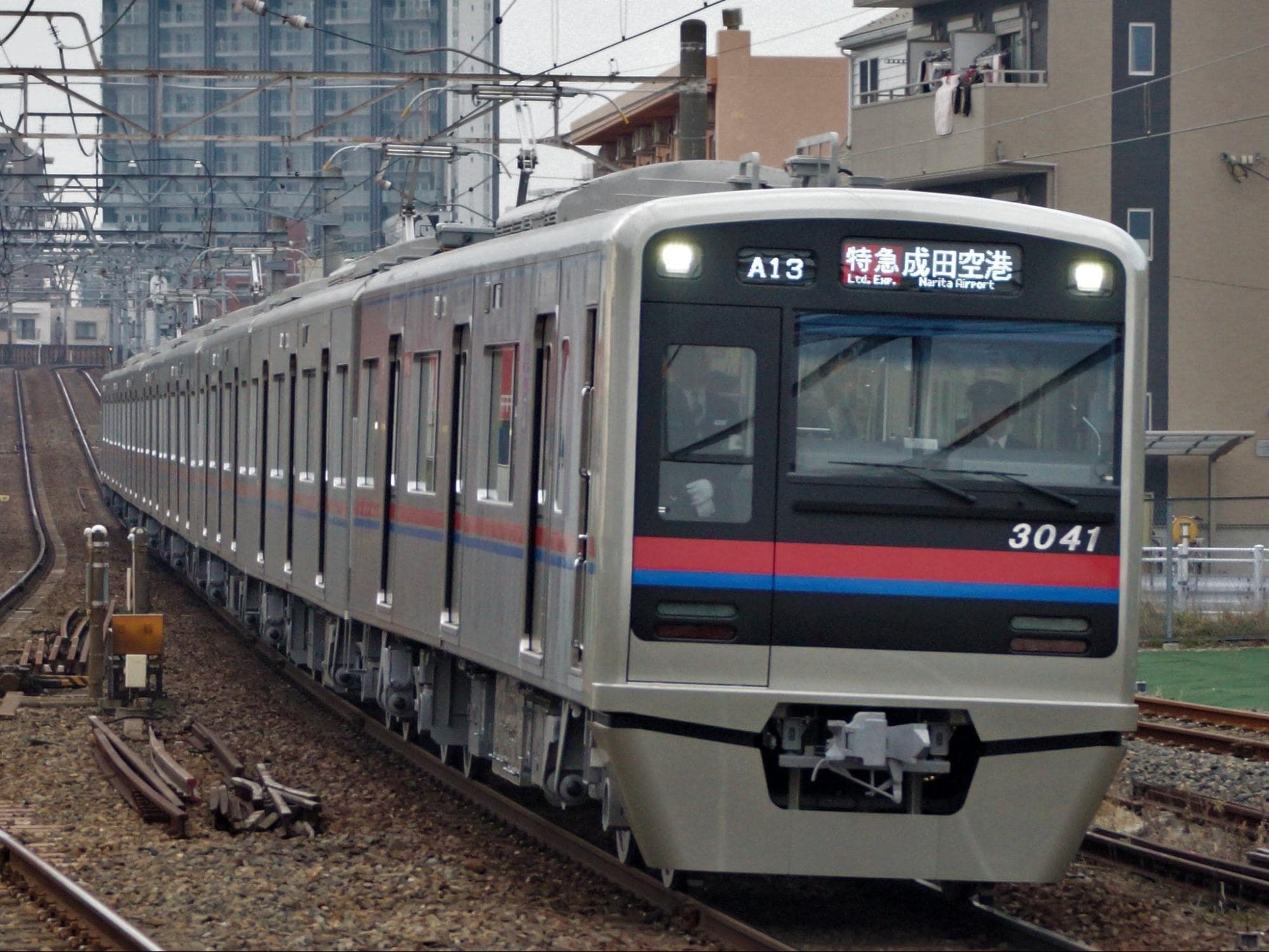
Image credit: Wikimedia Commons

Image credit: Keisei Electric Railway
The cheapest way to travel to central Tokyo by train is to take the Keisei Limited Express. Similar to the Access Express, it connects to the Toei Asakusa Line and JR Yamanote Line – Tokyo’s central loop.
The Limited Express is a conventional commuter train, which means it can also get very crowded during the rush hours. Nevertheless, because of its affordability and frequency, it’s the preferred choice for many travellers who are on a tight budget and don’t mind the extra bit of time it takes.
One-way trip to Tokyo Station
Price: ~¥1,210/pax for adults, ~¥610/pax for children
Estimated travel time: 1 hour 15 minutes, departs every 20 minutes
– By Bus –
6. Airport Limousine Bus
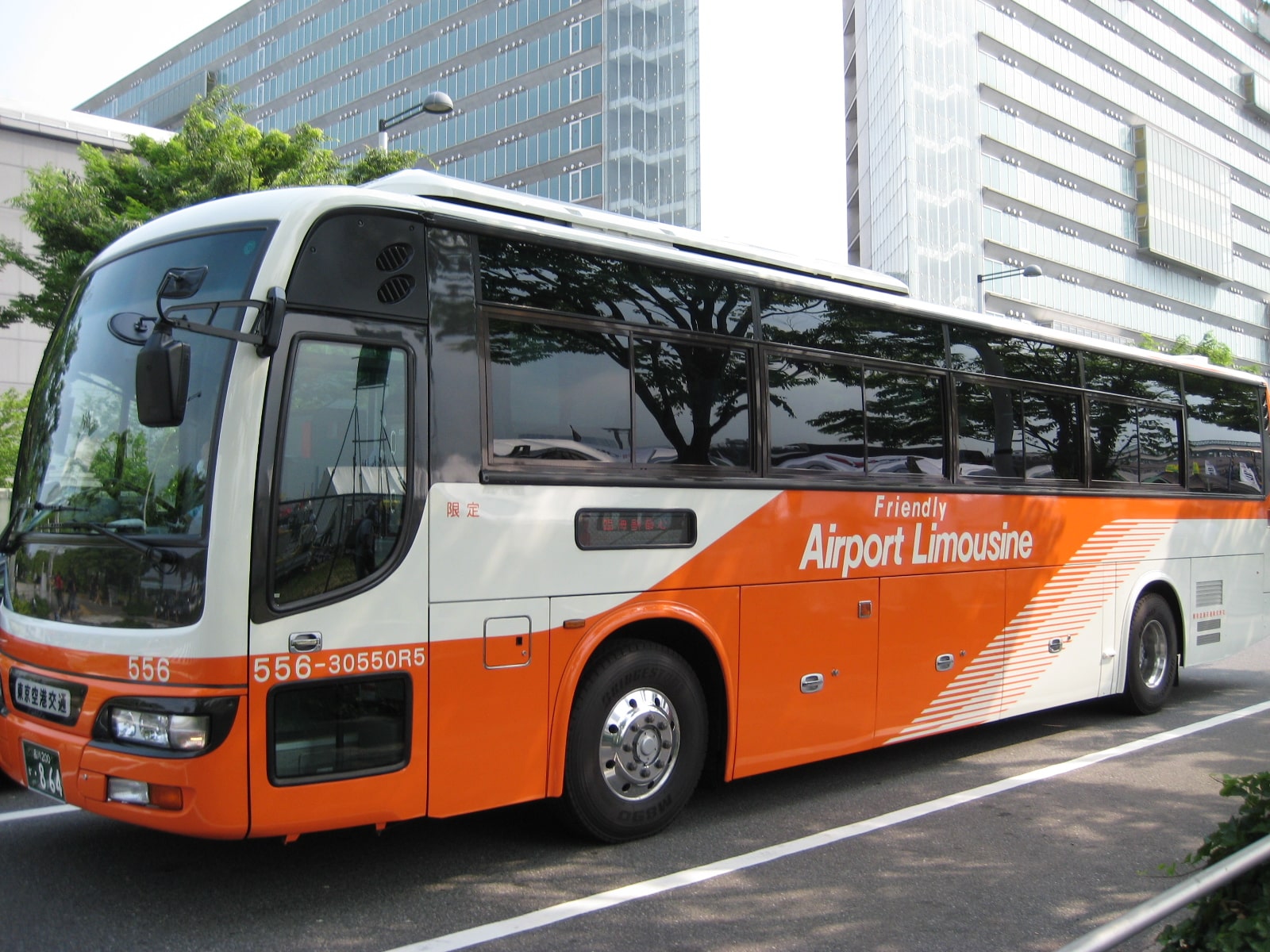
Image credit: aomisan
The Airport Limousine Bus is an option for those with large pieces of luggage looking for a direct connection to their hotels. The service covers most areas in the city and the major hotels around them. This means you can skip the hassle of carting your luggage around while navigating the subway system, saving you some energy to take on the rest of your adventure.
There are, however, some restrictions on luggage pieces. Each passenger can check-in up to 2 pieces of luggage with dimensions below 50cm x 60cm x 120 cm and not exceeding 30kg each. Call ahead (+81-03-3665-7220) to make special arrangements for equipment like surfboards, skis and fishing rods.
It takes around 1.5 to 2 hours to reach Tokyo Station, depending on traffic conditions. Peak hours do cause additional travel time, so do allocate some time for delays. Buses leave every 20 minutes, so little waiting time is required.
Tickets for the Airport Limousine are pricey. Depending on your destination, they go for around ¥3000. Nonetheless, special discounts for round trips back to the airport and special rates for youths and the elderly. Do reserve your tickets early as seats for the buses heading to popular hotel locations like Shinjuku are snapped up fairly quickly.
Tip: For a more comfortable experience, the premium express trains such as the Skyliner and N’EX are more preferable as they’re in the same price range. Still, limousine buses are more luxurious than the discount shuttle buses – expect spacious seats, leather headrests and a washroom on board. You can reserve the front row seats for additional legroom if you have long legs. Free Wi-Fi is also available onboard.
One-way trip to Tokyo Station
Price: ~¥3,000/pax for adults, ~¥1,500/pax for children
Round trip
Price: ¥4,500/pax
Estimated travel time: 1.5-2 hours, departs every 20 minutes
Check their list of departures here.
7. ‘Discount’ Shuttle Bus
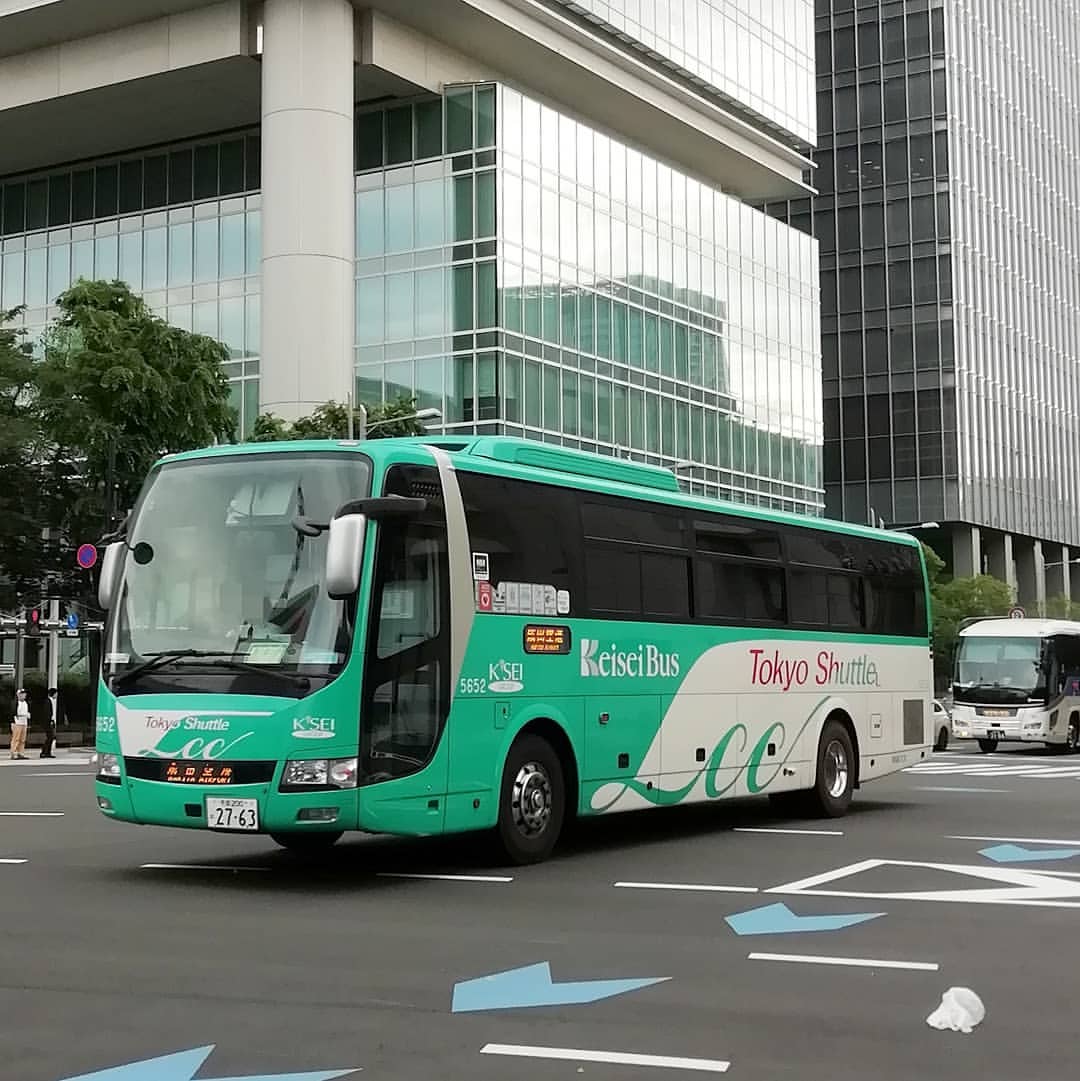
Image credit: @ichi23jp
For travellers with a tight budget like backpackers and those not in a hurry, this is the best and cheapest option for you.
With inexpensive tickets of only ¥1,000/pax and frequent departures at every 10-20 minutes, these buses are very popular amongst tourists and locals alike. The service also begins as early as 5.55AM and the last bus departs at 12.30AM, which makes it a good transport alternative for travellers who arrive outside of train operating hours (7.30AM to 11.30PM). Late-night buses departing after 11.10PM cost a little more at ¥2,000/pax.
Legroom is around 85.5cm wide – approximately the same space as what you’d get on an economy flight – and you’ll still be able to catch a nap on the 1.5 hour-long ride. To sweeten the deal, combo discounts with subway passes and a round trip back to the airport is available.
Check-in luggage is limited to just one piece per passenger, and cannot weigh over 20kg. Carry-on bags must be stowed in the overhead compartment.
The ‘discount bus’ service is actually provided by three different shuttle services. Tokyo Shuttle connects to Tokyo Station and Yurakucho Shuttle links to Yurakucho, just adjacent to Ginza. THE Access Narita connects to both Tokyo and Ginza Stations.
Tickets returning to Narita Airport are often fully booked and seating priority is given to passengers who have reserved a ticket over passengers purchasing tickets over the counter, so do book them early. You can book tickets for Tokyo Shuttle and Yurakucho Shuttle here.
Tip: Tokyo Shuttle and THE Access Narita will merge in February to become a single service, TYO-NRT Airport Bus. Do note this change and don’t be alarmed to find a different-looking bus company operating. Also, toilets are not available at the bus stops, so visit one before boarding the bus.
One-way trip to Tokyo Station or Ginza Station
Price: ¥1,000/pax in the day, ¥2,000/pax from 11.10PM to 12.30AM
Estimated travel time: 1.5-2 hours, departs every 10-20 minutes
Check their list of departures here.
– By Taxi –
8. Taxi
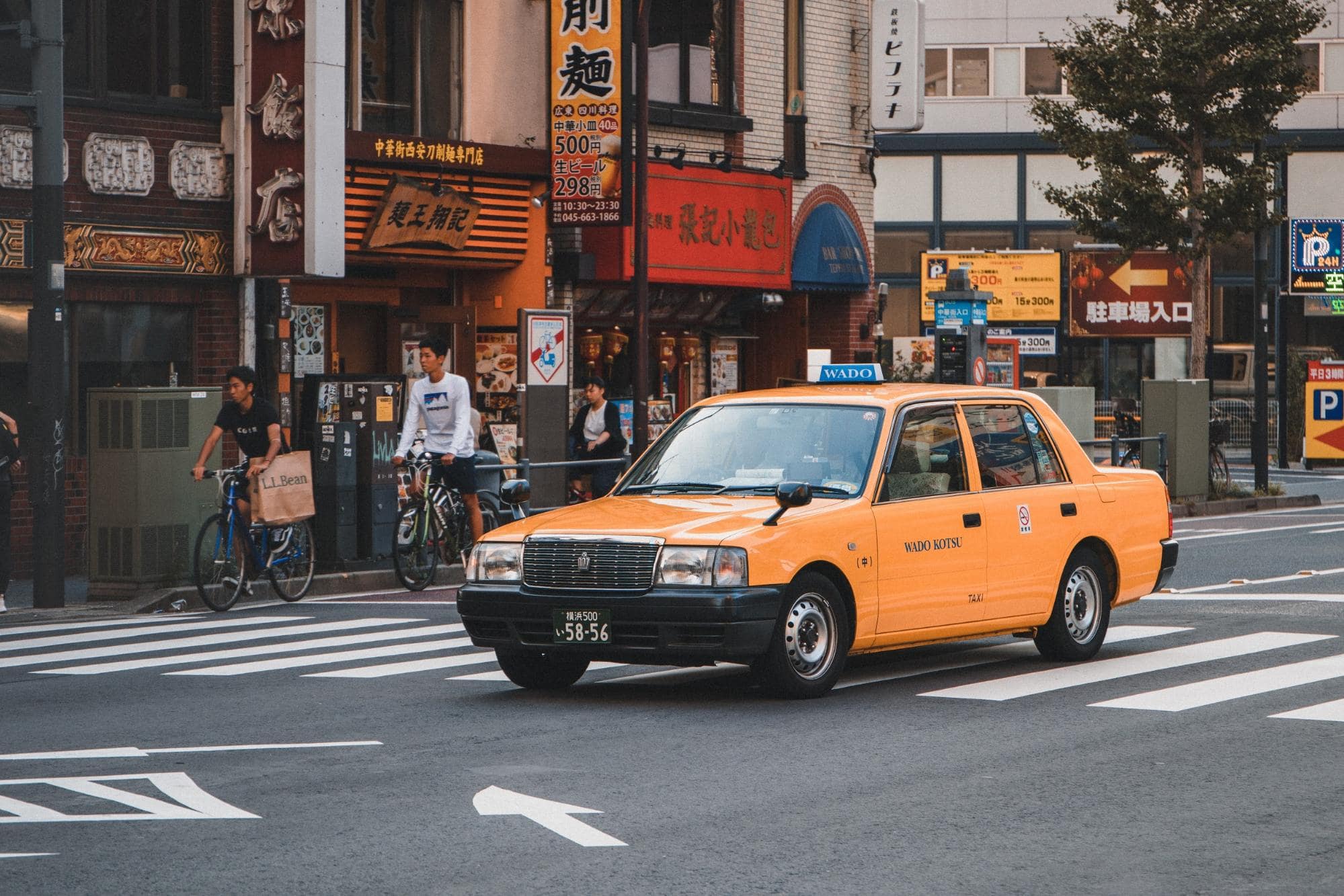
Image credit: Ben M
This is the most direct way to your accommodation, but also the most expensive option on the list.
Taking a taxi is a preferred option for those who are arriving in the wee hours of the day and don’t want to spend time waiting in the airport for the train and bus services to begin, as well as for those who want to have the luxury of a private vehicle to themselves. Travellers in groups of 4 would sometimes take the taxi too, depending on the amount of luggage they’re carrying with them.
On the other hand, taking the taxi from Narita Airport to central Tokyo is extremely expensive. It costs over ¥20,000 to get to the city, excluding expressway tolls and other additional charges.
As most taxi drivers don’t speak English, it’d be good to have a copy of your hotel’s address ready to show your taxi driver if you can’t speak Japanese. If all else fails, Google Translate is your best friend.
Tip: Fixed fare taxis to the city are available, depending on the area you’re heading to. Advance reservation is not required, but speak to the taxi driver before hopping onboard.
One-way trip to Tokyo Station
Price: ¥22,000 from 5AM to 10PM, ¥26,000 from 5AM to 10PM
Estimated travel time: 1-1.5 hours
Best ways to get to Tokyo from Narita Airport
We hope that with this guide, you’ll be able to pick out the mode of transportation which best suits your needs – be it sleek express trains or budget-friendly buses.
Check out our other articles for ideas on things to do after arriving in Tokyo:
- Free things to do in Tokyo
- Convenient hotels
- Cheap capsule hotels
- Anime-themed cafes
- Halal restaurants and cafes
Cover image adapted from (clockwise from left):Ben M, aomisan and @yasushi1031
